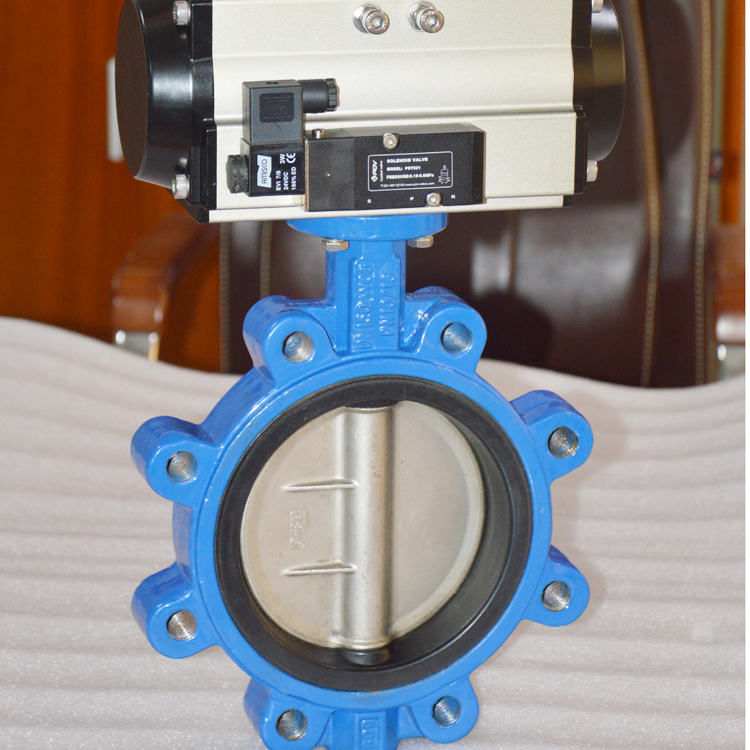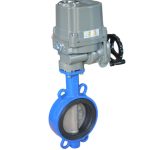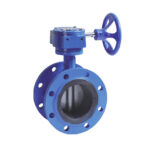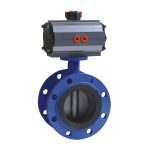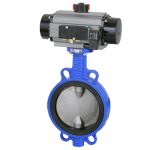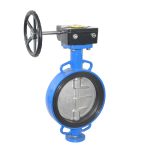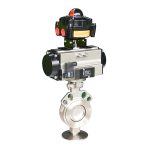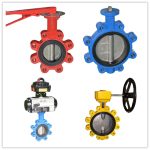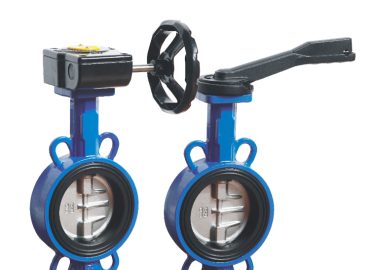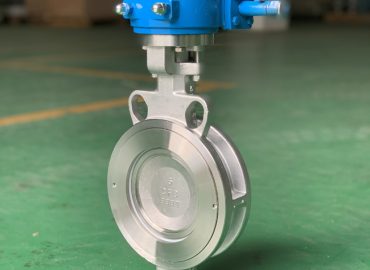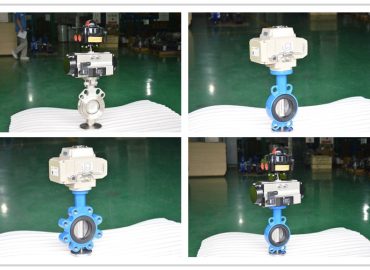Choosing the correct lug type butterfly valve dimensions for your project is as crucial as the project itself. The functionality and efficiency of your system largely depend on this critical choice. This task, however, can be quite challenging, given the myriad factors that come into play. From understanding the specific needs of your project to considering the pressure rating, valve size, temperature range, and material selection, there are many variables to navigate. This blog post aims to guide you through this process, providing key insights and practical tips on how to select the right lug type butterfly valve dimensions for your project. Let’s delve into these key considerations to help you make an informed decision.
Introduction
Selecting the right lug type butterfly valve dimensions for your project can be a complex task, especially if you’re not familiar with the intricacies of these components. The first step is understanding what a lug type butterfly valve is: it’s a type of butterfly valve that uses metal lugs to hold the valve in place. These lugs are typically spaced around the outer edge of the valve and can be used to secure it between two flanges. When selecting the right lug type butterfly valve dimensions for your project, several key factors need to be considered. First, you should consider the size of the pipe system in which the valve will be installed. This includes both the diameter and the length of the pipe. The valve must fit securely within the pipe system to ensure proper function. Next, consider the pressure rating of the valve. This is typically measured in pounds per square inch (psi) and determines the maximum pressure that the valve can withstand. If the pressure in your system exceeds the valve’s rating, it could lead to failure. Another factor to consider is the material of the valve. Different materials have different properties and can withstand different types of environments and fluids. For instance, stainless steel is durable and resistant to corrosion, making it suitable for a wide range of applications. Finally, consider the flow control requirements of your system. Some valves offer more precise control than others, so choose a valve that matches your needs. By taking into account these factors, you can select the right lug type butterfly valve dimensions for your project, ensuring optimal performance and longevity.
Brief overview of the blog post.
In this blog post, we will delve deep into the process of selecting the right lug type butterfly valve dimensions for your project. We’ll start by understanding what butterfly valves are and their different types, with a particular focus on the lug type. We’ll then look at the key factors to consider when choosing valve dimensions, including project requirements, valve size, pressure rating, temperature range, and material selection. We’ll also discuss the potential issues that can arise from choosing incorrect valve dimensions and provide real-world examples to underscore the importance of making the right choice. Lastly, we’ll provide a detailed step-by-step guide to assist you in this critical selection process. Whether you’re an experienced engineer or a novice, this post is designed to equip you with the knowledge and confidence needed to make the best decision for your project.
Importance of choosing the right lug type butterfly valve dimensions for a project.
Choosing the right lug type butterfly valve dimensions for your project is of paramount importance for several reasons. First, it directly influences the efficiency and functionality of your system. A valve that’s too small may restrict flow, while one that’s too large can lead to unnecessary costs and installation difficulties. Second, the correct dimensions ensure the valve can withstand the pressure and temperature ranges within your specific operation. If these factors aren’t accurately accounted for, the valve could fail, leading to system downtime, costly repairs, or even safety risks. Lastly, the right valve dimensions allow for proper sealing and isolation within the piping system, critical for preventing leaks and maintaining the integrity of the flow. Therefore, careful consideration of valve dimensions contributes significantly to the overall success and reliability of your project.
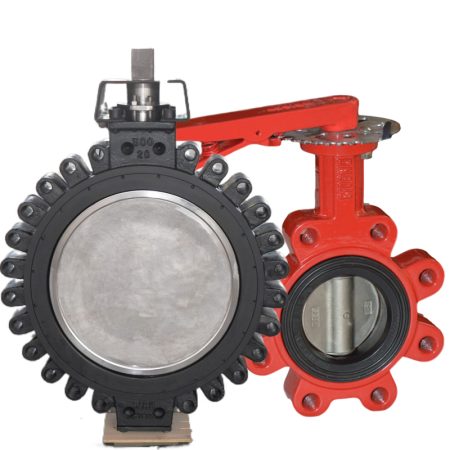
Understanding Butterfly Valves
Butterfly valves are a crucial component in various industries, playing a vital role in regulating the flow of fluids in a piping system. These valves are named for the butterfly-like disc that rotates to open or close the valve. As the valve handle is turned, the disc, which is mounted on a rod, turns on its axis, either parallel or perpendicular to the flow of fluid, controlling the fluid’s passage. There are three main types of butterfly valves: lug type, wafer type, and double offset or high-performance butterfly valves. The lug type, which we’ll focus on in this article, is characterized by metal lugs that are used to secure the valve between two pipe flanges, allowing it to handle higher pressure systems. This type of butterfly valve can be removed from a system without needing to shut down the entire system. Understanding butterfly valves and their operation is essential because choosing the right type and size can significantly impact the efficiency of your fluid control system. Their low cost, ease of installation, and quick operation make them a popular choice across many industries, including water distribution, chemical processing, and power generation.
Explanation of what a butterfly valve is.
A butterfly valve is a member of the quarter-turn valve family, meaning that the movement to open or close the valve involves a rotational motion of 90 degrees. The main component of a butterfly valve is a disk connected to a rod. When the valve is opened, the disk rotates, allowing fluid to pass through. Conversely, when the valve is closed, the rod rotates the disc to obstruct the fluid’s path. Butterfly valves are used primarily to start, stop, or regulate the flow of fluids in a piping system, making them versatile and essential in many industrial applications. Their simple construction includes a disc that blocks the valve bore when in a closed position and rotates to open position when required. They are also known for their fast-acting nature, which makes them highly efficient in controlling flow.
Different types of butterfly valves (with a focus on lug type).
Butterfly valves, known for their quarter-turn rotary motion, are commonly used to regulate, start, and stop flow within a system. They come in various types, each with unique characteristics and applications. The primary categories include centric butterfly valves, which are centered in the bore with the disc centered as well, and eccentric butterfly valves which have an off-center disc positioning. Within these categories, we find specific types like the wafer butterfly valve, flanged butterfly valve, and welded butterfly valve, among others. A noteworthy type is the lug butterfly valve, which stands out due to its distinctive metal lugs that hold the valve in place between two flanges. This design offers greater flexibility and durability, making it suitable for systems requiring bidirectional pressure capabilities. Also, they can be removed from a specific part of a piping system without needing to disrupt the entire system. It’s also important to note that butterfly valves can be soft seated (using rigid PTFE) or metal seated, each with different pressure and temperature tolerances .
How butterfly valves work.
Butterfly valves are a type of flow control device, used to regulate or isolate the flow of a liquid or gas through a pipe. The mechanism of a butterfly valve is fairly straightforward. At the core of the valve, there’s a circular disc or “butterfly” that rotates on an axis. When the valve is fully open, the disc is turned parallel to the flow direction, allowing the medium to pass through freely. As the valve handle or actuator is turned, the disc rotates and gradually blocks the passage, reducing the flow. When the disc is rotated to a position perpendicular to the flow direction, the valve is fully closed, completely blocking the flow. The simplicity of this design allows for quick operation and the ability to handle a wide range of pressure and temperature conditions, making butterfly valves a versatile choice for many different types of industrial applications.
Factors to Consider When Selecting Lug Type Butterfly Valve Dimensions
Selecting the correct dimensions for a lug type butterfly valve involves considering several critical factors. Firstly, project requirements are paramount. This includes understanding the type of fluid to be controlled, its flow rate, and the system’s overall operational parameters. The valve size is another crucial factor. It should match the pipe’s internal diameter where it will be installed to ensure efficient flow control. Pressure rating is another aspect to consider. The valve must be able to withstand the maximum pressure exerted by the fluid in the system without failure. The temperature range of the system also influences the selection. The valve materials must withstand the system’s lowest and highest temperatures without compromising its integrity or performance. Material selection is equally important. The valve materials should be resistant to the fluid passing through it to avoid corrosion and wear. Other considerations include the valve’s installation and maintenance requirements, cost, and availability of replacement parts. In essence, choosing the right lug type butterfly valve dimensions requires a thorough understanding of the system’s operational requirements and environmental conditions, ensuring optimal performance and longevity.

Project Requirements
Selecting the right lug type butterfly valve dimensions for your project depends on several key factors related to your specific project requirements. First, you need to evaluate the pressure and temperature conditions in your system. The valve dimensions must be suitable to withstand these conditions without compromising performance or safety. Second, consider the type of fluid that the valve will handle. Different fluids may require different materials for the disc and seat to ensure proper sealing and long-term durability. Third, take into account the pipe size in your system. The valve’s diameter should match the internal diameter of your pipes to maintain fluid flow efficiency and prevent potential issues like cavitation or turbulence. Finally, consider whether you need a manual or automated valve. Manual valves are typically more cost-effective and easier to install, but automated valves offer greater control and accuracy, especially in larger systems. By carefully considering these factors, you can select the right lug type butterfly valve dimensions that meet your project’s unique requirements.
Understanding the specific needs of your project.
Understanding the specific needs of your project is a fundamental step in ensuring its success. This involves defining clear objectives, identifying key deliverables, understanding the scope, and knowing the resources required. It’s important to assess the project’s unique requirements in terms of time, cost, quality, and risk. This includes understanding the stakeholders’ expectations, the project’s intended outcomes, and the constraints that could potentially hinder its progress. Understanding these specifics will allow for better planning and execution, as well as effective communication with the team and stakeholders. Additionally, it enables you to devise a feasible project timeline and allocate resources efficiently. In essence, having a thorough understanding of your project’s specific needs provides a roadmap that guides all aspects of project management, from initiation and planning to execution, monitoring, control, and closure.
How these needs influence valve dimensions.
The operational needs and requirements of a system greatly influence the dimensions of the butterfly valve used. For instance, the valve’s size must match the diameter of the pipe in which it will be installed to ensure proper sealing and efficient flow control. The pressure rating of the system also impacts the thickness of the valve’s disc and the strength of its stem. Higher pressure systems require sturdier, thicker valves to withstand the increased force. Furthermore, the type of fluid being controlled can affect the material composition and consequently the dimensions of the butterfly valve. Corrosive fluids might necessitate the use of thicker, corrosion-resistant materials for the valve components. Lastly, the temperature of the system plays a role too. High temperatures may cause materials to expand, necessitating allowances in design for thermal expansion. Therefore, careful consideration of these factors is crucial in determining the appropriate dimensions for a butterfly valve in any given application.
Valve Size
Choosing the right dimensions for a lug type butterfly valve is crucial to the success of your project. Valve size, in particular, is a key factor that should align closely with your system’s specifications and needs. The valve size should correspond to the internal diameter of the pipe where it will be installed. Incorrect sizing can lead to problems, such as reduced flow rates or increased pressure drops, which can hinder the efficiency of your system. It’s also important to consider the system’s flow requirements. For high-flow applications, a larger valve may be necessary, while a smaller valve might suffice for lower flow rates. Additionally, the valve should be able to handle the maximum pressure anticipated in the system. If the system pressure exceeds the valve’s capacity, it could lead to valve failure. Lastly, remember that the size of the valve will influence other factors, like cost and installation requirements. Therefore, selecting the correct valve size requires a comprehensive understanding of your project’s requirements, ensuring optimal performance and efficiency.
Explanation of how valve size impacts functionality.
The size of a valve plays a crucial role in its functionality and overall performance. The valve size, specifically its diameter, should align with the internal diameter of the pipe in which it will be installed. If a valve is too small for the pipe, it can restrict flow, causing a drop in pressure and potentially leading to inefficiencies in the system. Conversely, if a valve is too large, it may not fully close or seal, leading to leaks. Additionally, an oversized valve can cause unnecessary turbulence and energy loss in the fluid flow. Moreover, the size of the valve can also impact its ability to handle different pressure levels. Larger valves tend to have higher pressure ratings, making them suitable for high-pressure systems. Therefore, selecting the correct valve size is essential for maintaining the efficiency, reliability, and safety of the entire system.

Guidelines for selecting the correct valve size.
Selecting the correct valve size is crucial for the optimal performance and efficiency of your system. The process begins with understanding the pipe size where the valve will be installed, as the valve size should match the internal diameter of the pipe to ensure proper flow control. Next, consider the flow rate requirements. Too small a valve may restrict the flow, while an oversized valve may lead to inefficiencies and increased costs. Another important factor is the pressure drop across the valve, which should be within acceptable limits to avoid damaging the valve or affecting the system’s performance. The type of fluid, its viscosity, and temperature also influence the valve size selection. Moreover, you must take into account the valve’s operation mode, whether it’s manual, electric, or pneumatic, as this can impact the size and type of valve needed. Lastly, always refer to manufacturer’s specifications and guidelines, as they provide detailed information about each valve’s size and its suitability for different applications. By following these guidelines, you can ensure that you select the correct valve size for your specific needs.
Pressure Rating
Selecting the right lug type butterfly valve dimensions for your project based on pressure rating involves careful consideration of several factors. The valve’s pressure rating must correspond to the maximum pressure that your system will experience. A valve with a lower pressure rating than your system’s maximum pressure can lead to failure, while one with a much higher rating may be unnecessarily expensive and possibly over-engineered for your needs. To determine the appropriate pressure rating, consider the operating pressure of your system, including any potential pressure surges or fluctuations. Additionally, the type of fluid being controlled can affect the pressure requirements due to varying fluid densities. Lastly, it’s also important to remember that the pressure rating of a valve is often related to its size – larger valves typically have lower pressure ratings. By taking these factors into account, you can select a lug type butterfly valve with the correct dimensions and pressure rating for your specific project.
Importance of understanding the pressure rating.
Understanding the pressure rating of a system or a component is crucial for safety and efficiency. The pressure rating indicates the maximum pressure that a system or a component can safely withstand. If this limit is exceeded, it can lead to failure or even catastrophic damage, posing potential risks to safety and operations. For instance, in a piping system, if a valve’s pressure rating is lower than the system’s pressure, it could cause the valve to fail, resulting in leaks or bursts. This could not only disrupt the operation but also cause significant repair costs or even harm to personnel. Additionally, understanding the pressure rating is essential in selecting suitable materials and designing the system layout. Different materials have varying strength and resistance to pressure, and the system’s design should allow for effective pressure management. Therefore, having a thorough understanding of the pressure rating is an integral part of system design, operation, and maintenance.
How to choose a valve with the appropriate pressure rating.
Choosing a valve with the appropriate pressure rating is an essential step in ensuring the efficiency and safety of your system. The pressure rating of the valve must be able to withstand the maximum pressure anticipated in the system. When selecting valves, it’s crucial to consider the line pressure of the piping system and evaluate the desired pressure drop across the valve. The control valve’s size should also be selected so that it operates between 60 and 80% open at the maximum required flow rate whenever possible. This ensures optimal controllability and performance. It’s also beneficial to factor in the design flow rate and desired pressure drop, which allow you to calculate the required valve Cv (Flow Coefficient) and select a suitable valve accordingly. Moreover, the STAMPED method can be helpful, accounting for Size, Temperature, Application, Media, Pressure, Ends (or connections), and Delivery.
Temperature Range
Selecting the right dimensions for a lug type butterfly valve isn’t just about size; temperature range is another key factor to consider. The temperature range refers to the minimum and maximum temperatures that the valve can safely handle without losing functionality or integrity. This factor is especially crucial if your project involves fluids at high or low temperatures. Materials used in the valve’s construction, such as the body, disc, and seat materials, should be compatible with the temperature range of your application. For instance, metal valves can withstand higher temperatures than those made from plastic. Similarly, some seat materials like PTFE are suitable for a broad temperature range, while others like EPDM have a narrower safe temperature range. It’s essential to check the manufacturer’s specifications for the temperature limits of the valve. Choosing a valve with a temperature range that doesn’t align with your system’s requirements could lead to failure or damage, compromising the safety and efficiency of your operation.
The role of temperature in valve selection.
Temperature plays a pivotal role in valve selection as it greatly impacts the functionality and lifespan of the valve. Different materials used in valve construction have varying levels of resistance to temperature extremes. For instance, metal valves can generally withstand higher temperatures than those made from plastic or rubber. Therefore, understanding the operating temperature of the system is crucial when selecting a valve. If a valve is exposed to temperatures beyond its rated capacity, it may degrade or fail, leading to leaks or system shutdown. Additionally, temperature considerations are not limited to the fluid being controlled; ambient temperature can also affect a valve’s performance. High ambient temperatures can cause thermal expansion in some valve materials, affecting the valve’s sealing ability and overall functionality. Hence, it’s crucial to consider both the fluid and the ambient temperature when choosing a valve for your system.
How to select a valve that can withstand your project’s temperature range.
Choosing a valve that can withstand your project’s temperature range is vital for the efficient and safe operation of your system. The first step is to understand the minimum and maximum temperatures your project will encounter. These values should include any potential temperature surges or variations. Once you have these figures, you can start looking at different valves. Each valve type and material has a specific temperature rating, indicating the range within which it can operate safely. For instance, metal valves generally withstand higher temperatures than plastic ones. Similarly, certain seals, like those made from PTFE, are more heat-resistant than others. It’s also essential to consider the type of fluid the valve will control since some fluids can significantly change in viscosity or even solidify at low temperatures, or vaporize at high temperatures, affecting the valve’s operation. Always refer to the manufacturer’s specifications and guidelines when selecting a valve. By considering all these factors, you can choose a valve that will reliably function within your project’s temperature range.
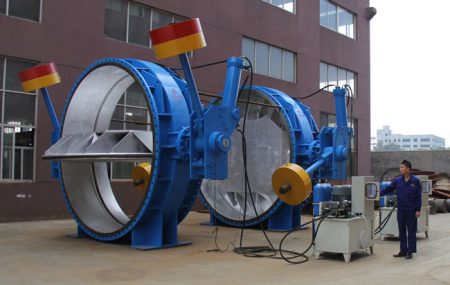
Material
When choosing the right lug type pneumatic butterfly valve dimensions for your project, the material is a key factor to consider. The material choice largely depends on the nature of the fluid that the valve will control. For instance, if the valve will be used for corrosive fluids, materials such as stainless steel or a lined valve body could provide excellent corrosion resistance. If the fluid is at high temperatures, you may need a valve made from materials that can withstand these conditions, such as high-temperature alloys. Additionally, factors such as the pressure rating and the environment in which the valve will operate also influence the material choice. Valves exposed to harsh environmental conditions require more durable materials to prevent premature wear and tear. Therefore, understanding your application’s specific needs is crucial in selecting the right material for your lug type butterfly valve.
Why the material of the valve matters.
The material of a valve plays a pivotal role in its performance, durability, and suitability for specific applications. Different materials offer varying levels of resistance to temperature, pressure, and chemical exposure. For example, stainless steel valves are known for their strength and corrosion resistance, making them ideal for high-pressure and high-temperature environments or applications involving corrosive substances. On the other hand, plastic valves, such as those made of PVC or PVDF, are often used in lower pressure applications and are resistant to a variety of chemicals, but they may not perform well under high temperatures. Furthermore, the material can affect the valve’s lifecycle and maintenance needs. Some materials might require regular maintenance to prevent rusting or degradation, while others are virtually maintenance-free. Therefore, understanding the operational conditions and selecting the appropriate valve material is crucial to ensure optimal performance, longevity, and safety of the system.
Tips for choosing the right material based on project conditions.
When choosing materials for a project, it is crucial to consider the specific conditions under which they will be used. Here are some tips to guide your selection process. First, understand the environmental conditions. Factors like temperature, humidity, exposure to sunlight, and corrosive environments can significantly impact material performance. For instance, metals like stainless steel or aluminum may be ideal for outdoor projects due to their resistance to weathering and corrosion. Second, consider the mechanical stresses the material will endure, such as tension, compression, or torsion. This will influence whether you need a material with high tensile strength, elasticity, or hardness. Third, take into account the project’s functional requirements. If the project involves electrical conduction, materials like copper or silver would be suitable. Finally, economic and aesthetic considerations also play a role. While certain materials might be technically optimal, they may not be financially viable or visually appealing. Always strive to strike a balance between functionality, durability, cost, and aesthetics when choosing materials for your project.
The Impact of Choosing the Wrong Valve Dimensions
Choosing the wrong valve dimensions for your project can have far-reaching and often costly implications. Firstly, if the valve is too small for your system, it may not handle the flow rate of the fluid, leading to a loss in efficiency or even complete system failure due to excessive pressure buildup. On the other hand, a valve that’s too large can lead to wasted resources, as larger valves are generally more expensive and require more energy to operate. Moreover, an oversized valve may not fully open or close due to the lack of sufficient flow, leading to poor control over the fluid flow and potential damage to the valve itself.
Secondly, incorrect valve dimensions can lead to improper sealing, resulting in leaks that can be harmful, especially when dealing with hazardous fluids. These leaks not only pose a safety risk but also contribute to environmental pollution and economic loss due to wasted resources.
Thirdly, a valve with incorrect dimensions can affect the accuracy of flow measurements. Many systems rely on precise flow control for optimal performance, and a wrong-sized valve can lead to inaccurate measurements, thereby affecting the entire system’s performance.
Lastly, choosing the wrong valve dimensions can lead to increased maintenance costs. A valve that’s not correctly sized for its application will likely wear out quicker, requiring frequent replacements or repairs.
Therefore, it’s crucial to carefully consider the correct dimensions when selecting a valve, as this decision impacts everything from system efficiency and safety to cost-effectiveness and environmental responsibility.
Discussion on possible issues caused by incorrect valve dimensions.
Incorrect valve dimensions can lead to a host of problems in a system, affecting both its efficiency and safety. One of the most common issues is leakage, which can occur if the valve is too small or too large for the pipe it’s connected to. This can lead to fluid loss, increased operating costs, and potential environmental hazards. Additionally, a valve that’s too small for the system can cause excessive pressure drops, leading to inefficient operation and increased wear on the valve itself. Conversely, a valve that’s too large may not fully open or close, leading to a lack of control over the flow rate. Incorrect valve dimensions can also lead to improper alignment with the piping system, causing stress on the pipes and potentially leading to cracks or breaks. In extreme cases, incorrect valve sizing can cause system failure, posing serious safety risks. Therefore, it’s crucial to accurately determine the necessary valve dimensions to ensure optimal system performance and safety.

Real life examples/case studies of problems caused by wrong selection.
Selecting the wrong valve material or type can lead to significant problems, as evidenced by real-world examples. For instance, in a chemical processing plant, a valve made of regular carbon steel was mistakenly used instead of stainless steel in a system handling a corrosive liquid. Over time, the valve corroded and eventually failed, leading to a costly leak that required extensive cleanup and repairs. In another case, a power generation facility used a standard gate valve in a high-temperature steam service application. Due to the excessive heat, the valve’s seals degraded rapidly, causing a loss of efficiency and eventual system failure. The plant had to shut down for several days to replace the valve and repair the damage, resulting in substantial downtime costs. These cases underscore the importance of proper valve selection based on the specific requirements of the application, including the nature of the fluid, operating pressure, temperature, and environmental conditions.
Step-by-Step Guide to Selecting the Right Lug Type Butterfly Valve Dimensions
Selecting the right lug type wafer butterfly valve dimensions is a multi-step process that involves understanding your project’s specific requirements and the conditions under which the valve will operate.
- Identify the Function: The first step is to identify the function of the valve in your system. Will it be used to isolate flow, regulate flow, or both? This will help you determine the type of butterfly valve needed.
- Understand the Fluid Characteristics: Next, understand the characteristics of the fluid that will pass through the valve. This includes its temperature, pressure, viscosity, and whether it’s corrosive or abrasive. These factors will influence the material selection for your valve.
- Determine the Pipe Size: The size of the pipe in your system will directly impact the dimensions of the valve. The valve must fit securely within the pipeline to ensure proper functioning.
- Consider the Operating Conditions: Evaluate the operating conditions such as temperature and pressure ranges. For example, if the valve will operate under high pressures, a high-performance butterfly valve might be necessary.
- Choose the Right Material: Based on the fluid characteristics and operating conditions, choose a suitable material for your valve. If the fluid is corrosive, opt for materials like stainless steel or a lined valve body. If the fluid is at high temperatures, a valve made from high-temperature alloys might be required.
- Check the Pressure Rating: Ensure the chosen valve can withstand the maximum pressure of your system. The pressure rating of the valve should always exceed the maximum system pressure to prevent damage and ensure safety.
- Evaluate the Installation and Maintenance Requirements: Consider how easy it is to install and maintain the valve. Some materials may require more maintenance than others, and some valve designs may be more complex to install.
- Cost and Availability: Finally, consider the cost of the valve and its availability. While a specific valve type may be ideal for your project, it might not be economically feasible or readily available.
By considering these factors and working closely with a valve manufacturer or distributor, you can select the right lug type butterfly valve dimensions for your project.
Detailed guide on how to select the correct valve dimensions.
Selecting the correct valve dimensions is a critical process that necessitates a comprehensive understanding of your system’s requirements and the various types of valves available. The first step in valve selection is to determine the required flow coefficient (Cv), which is a measure of the valve’s capacity to pass fluid. This can be calculated by comparing the required flow rate to the pressure drop across the valve. Once you have determined the Cv, you can select the appropriate valve size using the respective flow coefficient table.
As a general rule, correctly sized globe valves are typically one size smaller than the line size, while properly sized butterfly, full-ball and segment valves match the line size. It’s also advisable to size the control valve so that it operates somewhere between 20-80% open at the maximum required flow rate, ensuring efficient operation and longevity.
Remember, the material, style, and connection type of the valve body also play pivotal roles in the selection process, and these factors are primarily dependent on the specific application and environment. Therefore, careful consideration of all these aspects will guide you in selecting the correct valve dimensions for your project.
Practical tips and advice to aid the selection process.
Selecting the right valve dimensions for a specific application involves careful consideration of several factors. Firstly, understand the nature of the fluid to be controlled. This includes its viscosity, temperature, and whether it’s corrosive or abrasive. These factors can influence the type of valve material and design suitable for your system. Secondly, consider the operating conditions such as pressure and flow rate. These will help determine the correct valve size to ensure optimal performance and efficiency.
Thirdly, consider the valve’s location and accessibility for maintenance. If a valve is hard to reach, you might want to choose a durable valve that requires less frequent maintenance. Fourthly, keep in mind the environmental conditions where the valve will be installed. Factors like ambient temperature, humidity, and exposure to chemicals or other corrosive elements should influence your selection process.
Lastly, always consult with professionals or manufacturers when in doubt. They have the experience and expertise to guide you in choosing the right valve dimensions for your specific needs. Remember, the aim is not just to choose a valve that fits but one that operates efficiently, safely, and cost-effectively over its expected service life.
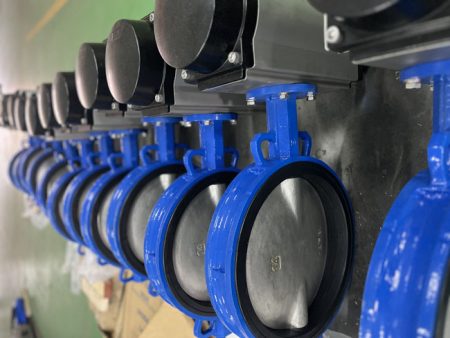
Conclusion
In conclusion, selecting the right lug butterfly valve dimensions for your project is a detailed process that requires careful consideration of various key factors. Understanding the function of the valve in your system, the characteristics of the fluid, the pipe size, and the operating conditions are all critical steps that will guide your selection process. The material choice, based on these factors, will ensure the durability and longevity of your valve under specific operating conditions.
Pressure rating is another essential aspect to consider. Always opt for a valve whose pressure rating exceeds your system’s maximum pressure to ensure safety and prevent damage. Additionally, it’s vital to evaluate the installation and maintenance requirements of the valve. Some valves may require more frequent maintenance or may be complex to install, both of which can add to the overall cost of your project.
Speaking of cost, while it’s important to choose a valve that meets all your technical requirements, it’s equally important to consider its cost and availability. Balancing these factors will help you make an informed decision that ensures the efficiency and safety of your system without straining your budget.
Remember, the right valve can significantly enhance your system’s performance and reduce the risk of costly repairs or downtime. Therefore, it’s worth investing the time and effort in selecting the right lug type butterfly valve dimensions. If you’re unsure, don’t hesitate to consult with a valve manufacturer or distributor, as they can provide valuable insight and guidance based on their expertise and experience.
By following this step-by-step guide, you’ll be well-equipped to make an informed decision, ultimately ensuring the success of your project. Selecting the right valve might seem daunting, but with careful consideration and planning, you can find the perfect fit for your specific needs.
Recap of the key points discussed.
In our discussion, we delved into the process of selecting the right lug type butterfly valve dimensions. We began by emphasizing the importance of understanding your system’s specifications, including the type of fluid, operating pressure and temperature, pipe size, and flow rate. The valve size should match the pipe’s inner diameter for optimal performance and efficiency. Next, we discussed the significance of checking the valve’s pressure rating to ensure it aligns with the system’s operational pressure, preventing potential leaks or failures. Material compatibility was another key point, with the material needing to be resistant to the fluid’s properties to avoid corrosion. We touched on the specific mounting requirements of lug type butterfly valves, underscoring the need for a correct flange pattern and bolt circle diameter. Finally, we concluded with the consideration of the valve operation method, whether manual, electrical, or pneumatic, and the necessity for the chosen valve to support this. Consultation with a valve specialist or engineer was recommended for any uncertainties in valve selection.
Emphasize the importance of selecting the right lug type butterfly valve dimensions.
Selecting the right dimensions for a lug type butterfly valve is not only crucial, but it could be the defining factor in the efficiency, safety, and longevity of your entire system. The correct valve size ensures optimal flow control, preventing the problems associated with underflow or overflow such as inefficiencies, increased wear and tear, and even system failure. A valve that’s too small can restrict flow, causing pressure drops and reducing system performance. Conversely, a valve that’s too large could result in poor sealing, leading to leaks and wasted resources. Furthermore, valves that are not sized correctly can cause unnecessary noise, vibration, and damage to other equipment. Therefore, carefully selecting the right lug type butterfly valve dimensions is paramount to maintaining a well-functioning, efficient, and safe operational system.
Encourage readers to seek professional advice if unsure.
While it’s commendable to take initiative in understanding and selecting the right valve dimensions for your system, it’s crucial to remember that there’s no substitute for professional advice. The complexity of valve selection involves a deep understanding of various engineering principles, system requirements, and safety standards. If you’re unsure or find yourself overwhelmed by the process, don’t hesitate to seek the guidance of a professional. Engineers and specialists in the field have years of experience and specialized knowledge that can help ensure you make the most suitable choice for your specific needs. They can provide tailored advice that takes into account all the unique factors of your system. Remember, making an informed decision with professional input can save you from potential operational issues, unnecessary expenses, and safety risks in the future.


